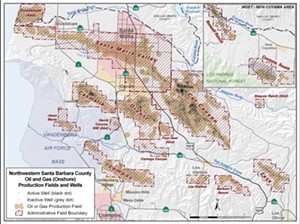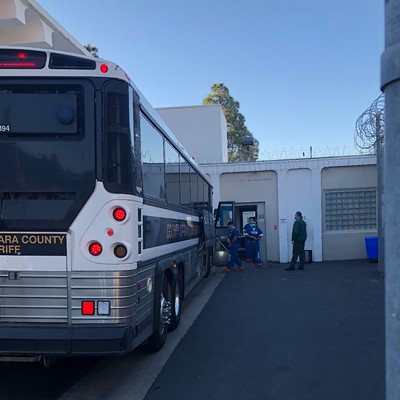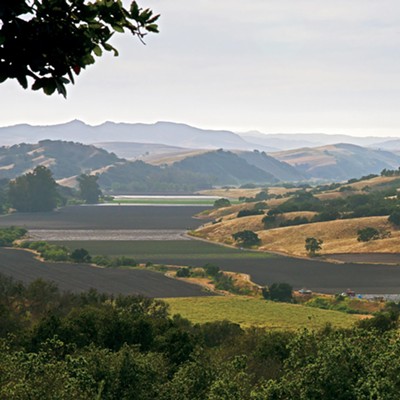Santa Barbara County Planning and Development staff found that Greka Energy led the pack in terms of violations and fines compared to other oil and gas producers in the county.
In an annual report presented to the Board of Supervisors on Dec. 5, county petroleum staff noted 161 violations were issued following petroleum unit inspections between 2015 and 2017, with 145 of those violation directed toward Greka.
During the three-year period, the county issued 86 violations in 2017, with 35 of the 36 fines again being levied against Greka. Staff inspects more than 2,450 existing wells and 125 "related facilities" annually.

Among the county's petroleum companies, Greka had the most facilities inspected in the report.
The Santa Barbara County Fire Department, which inspects 125 facilities annually, issued 676 violations between 2015 and 2017. More than 340 of those violations were given to Greka. Overall, violations peaked to 381 in 2016, but officials said that the majority were considered minor in nature and "corrected in a timely manner."
Santa Barbara County's Air Pollution Control District inspects 70 station sources per year. The agency issued 178 violations during the three-year period analyzed in the county staff report, 82 of those violations went to Greka.
"These violations included both emission and administrative violations," County Energy Specialist Erin Briggs said. Examples of violations include failing to operate equipment in compliance with their permits, local rules and state regulations, failing to maintain equipment, failing to keep records, and operating equipment without valid permits.
Staff told the supervisors that 18 spills were reported between 2015 and 2017, but none impacted active waterways. This year had the highest amount of spill volumes of the three years, totaling 10 barrels of crude oil and 200 barrels of produced water.
"Spills historically [are] trending downward," the report said.
Supervisors received an update on the proposed Plains All American Pipeline, which ruptured in May 2015 along the Gaviota coast. Plains is applying to construct new, smaller diameter replacement lines. The application is currently incomplete, according to the report.
Staff also gave operational status updates on Platform Holly, which is set for removal and to have its wells plugged and abandoned. The Ellwood Onshore Facility will facilitate Platform Holly work and then be decommissioned as well.
The report said the county would additionally be seeking public comment on a draft proposed for the Federal Outer Continental Shelf Leasing Program, which helps provide leases for drilling on federal land, in this case ocean beyond state lines. The Office of the Federal Register says the program is one of the largest facilitators for domestic oil and gas production.










